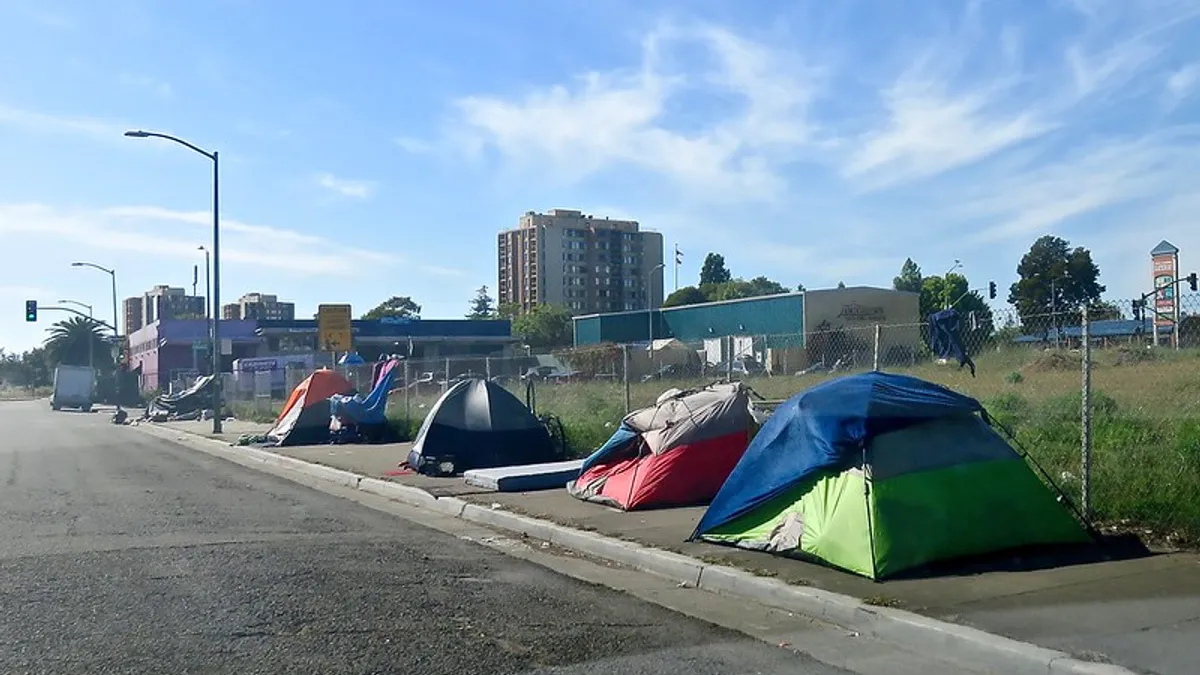Dive Brief:
-
California launched its first-ever "data warehouse" to provide a more complete picture of homelessness in the state, helping local officials make more data-informed policy decisions to prevent and end homelessness.
-
The state’s Homeless Coordinating and Financing Council, in partnership with 44 continuums of care (CoCs), created the Homeless Data Integration System (HDIS) to compile data about homelessness into a single repository.
-
The HDIS will help the state and CoCs determine which homelessness services are being provided across the state; who is accessing those services; and which interventions are the most effective.
Dive Insight:
California’s homeless population increased almost 7% last year, to 161,548 people, according to a U.S. Department of Housing and Urban Development (HUD) January 2020 point-in-time count, a number that is reported to likely have been exacerbated amid the pandemic. And the number of people served by homeless prevention services increased 131.6% from 2017 to 2020.
The HDIS is designed to help mitigate those increases, in part by providing new insights to identify patterns of homelessness and improve the coordination of services.
"You can’t fix what you can’t measure and having a statewide data system will help us determine what’s working and what isn’t, important insight we can use to create accountability and strengthen our response going forward," said California Gov. Gavin Newsom in a press statement.
The HDIS site reports, for instance, that local providers served 248,130 people experiencing homelessness throughout the state last year. And of the people served by local providers, about 37% were moved into permanent housing, 47% remain engaged with shelters or services and 16% have "disengaged" from services.
The homelessness data highlights "stark racial inequities," the HDIS website states. It notes, for example, that 31% of individuals accessing homelessness services are Black, but Black people are only 5.6% of the state’s population.
The state selected public accounting and business advisory firm Plante Moran to develop HDIS in 2020 with a budget of $1.2 million. The data repository, built in 15 weeks, can later be integrated with other state data to provide more insight into the services people experiencing homelessness are accessing.
"Before the HDIS, we had at best an infrequent and piecemeal snapshot of the homeless challenges in California. With the HDIS we will have an ongoing and holistic picture of how we can assess and improve services for those experiencing homelessness," said Joy Bonaguro, chief data officer for the California Government Operations Agency, in the statement.
Groups including Housing California and the California Housing Partnership recently launched an ambitious plan to ensure homes for all state residents by 2030. The plan comes as millions of U.S. residents owe back rent amid the pandemic, making them more vulnerable to evictions.
The roadmap calls on the state to create 1.2 million new affordable homes for low-income residents and homeless groups; help prevent 1 million low-income renters from losing their homes; and ultimately put an end to homelessness.
"As we see the light at the end of the pandemic tunnel, now is exactly the time to take stock of the existing inequities that have been exacerbated – and how to resolve them," Lisa Hershey, executive director of Housing California said in a statement when the groups unveiled the roadmap last month.












